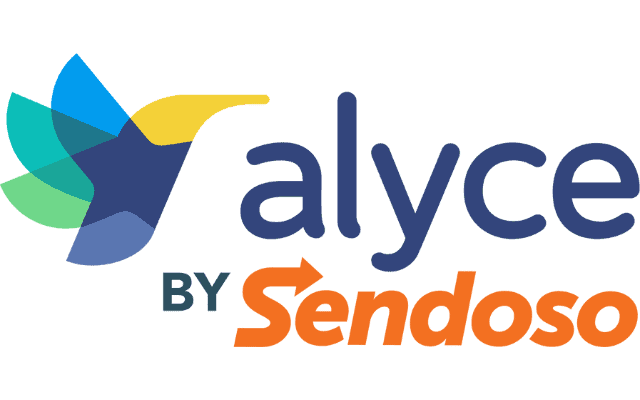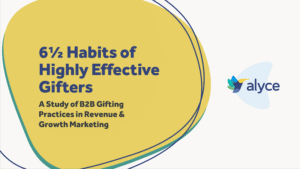
Sales teams are integral to B2B organizations. Making sales is how the business survives, so it checks out. And since this team is so important to the business, most teams try as hard as they can to make the sales rep’s job easier, make them more productive, and drive more business.
What generally comes with all this sales enablement is sales tools to scale their reach and increase their efficiency. Sales Reps now have an average of 8 Digital Tools in their workflow (PeopleLinx), but 52% of Sales leaders say reps don’t use their CRM – the source of truth for sales for an organization – as instructed.
Which is to say; if most Sales Reps aren’t using the primary tool that shows the fruits of their labor as instructed, what makes us think that they’re going to leverage the other 7 (ish) tools in their tech stack?
Enter: The Spiff.
Which actually stands for “Sales Performance Incentive Fund” (thanks HubSpot for doing that research for us), is a way that teams these days are trying to drive desired behaviors, better performance, and greater results with their sales reps.
But not all spiffs are created equally. In fact there’s a science that goes into motivating your sales team. I mean, even Harvard Business Review has weighed in on the topic.
As a customer success manager who’s built their career enabling marketing and sales teams, here are ideas I’ve seen work to incentivize tool adoption using spiffs.
Building a Spiff Program That Works
Focus On What Will Move the Needle
If your BDRs are doing the activities that your tools enable at the surface level, you can use spiffs to influence behaviors that impact KPIs that equates to quality usage.
For example, in the context of Alyce, we see a lot of BDRs sending a ton of gifts. But in addition to the quantity, we want to ensure the quality is there as well. That means leveraging Alyce for high value, in-market prospects and having proper gift follow up and seeing that reflected in Sent to View, and View to Accept rates in the product.
Alyce shouldn’t be used to blast out the same message across prospects; that’s our antithesis.
So when we see situations like this, spiffs can be used to incentivize desired behaviors, such as thoughtful and well-timed follow up after sending an Alyce gift to improve View to Accept rates.
Once the gift is sent, are you following up via email? Phone? Linkedin? Twitter?
It’s all about helping our customers understand that no tool is a silver bullet, but through a series of model behaviors, they can see excellent results. By illuminating which parts of their Alyce usage could be improved, and then leveraging spiffs to incentivize BDR teams, you’ll drive better results than just spiffing off tool adoption alone.
Ongoing Updates
The key to keeping your sales team continuously motivated – especially for spiffs that last longer than a week is that you need to send a regular weekly update. Giving everyone a reminder of where they are to goal and where they stand keeps everyone competitive.
One thing to be wary of is being too specific with your updates. When things are starting to get close and you have a few people battling it out for the top spot, it’s easy to say “only x amount more to overtake the lead” but what that really does is demotivate those who aren’t close to reaching that goal.
You want to call out people who have jumped up in the ranks and say that things are getting close without being too specific.
Highlight Big Wins
Call out or highlight some of the big win meetings booked. Keep a record of all the prospects and/or accounts who will be the target of your BDR activity and keep track of any substantial meetings booked with prospects from target accounts or high-value prospects.
Particularly in an organization executing an account based marketing program, if you are the lucky one to book a meeting with a high level prospect at a tier 1 account, everyone is going to be talking about you, the tool you used to book that meeting, and how it was done.
That will keep everyone’s mindset on the right thing: Winning together, facilitated by the tool you’re leveraging for this specific spiff.
At the end of the day, all BDR teams are here to put meetings on the calendar. And if they see that their teammates are booking meetings using a specific tool, there’s more extrinsic motivation for them to leverage the same tool and use the same process in leveraging it.
Show Don’t Tell The Value
Something that I’ve seen to be successful is creating reports for the BDRs where they can see all of their compensation broken down by channels and tools. So understanding that you’ve influenced a specific amount of pipeline that originated from a specific tool can help incentivize more usage of that tool for the BDRs.
The Alyce <> Salesforce integration is super helpful in this case because you’ll be able to see every contact who is enrolled in an Alyce gift campaign and what stage of the gifting process they are in, including booking a meeting, and opening an opportunity.
Leveraging reports like this taps into a more intrinsic motivation play, where the BDRs can see how they’ve been successful in the past and try to recreate those scenarios more and more by leveraging the tools that helped them drive specific outcomes.
If you can tell everyone that last month they made X amount of dollars because they leveraged a specific tool, there will be more of a drive to continue leveraging the tool and learning how to master it even more.
Leverage Your Rock Stars
This is a different approach to spiff programs, and it’s designed specifically for the rock stars.
There are always a few standout reps in the team, ones you wish everyone could model themselves after. So, help move those BDRs forward in their career while creating a larger team of rockstars through an incentivized coaching program.
In essence, each rock star is assigned one or two people that need a little more help. Help your rockstars coach their colleagues to be aspirational users of a tool.
Then the rock stars who help their teams hit a certain goal will be incentivized and rewarded alongside their team.
Incentivize Your Teams The Right Way
There are so many ways that different people are motivated, whether that’s from external competition or competing against themselves.
Not all individuals or teams are motivated by the same things, but the best way to approach a spiff is to make sure to be specific in the outcomes you’re trying to achieve, the process and behaviors you want your team to demonstrate in order to get there, and the orientation of the motivational philosophies you’ll implement.
I hope this gives you a variety of ideas to consider and helps you better understand how to keep your high performing teams motivated and ready to exceed goals into the new year and beyond!
Photo by Mimi Thian on Unsplash






